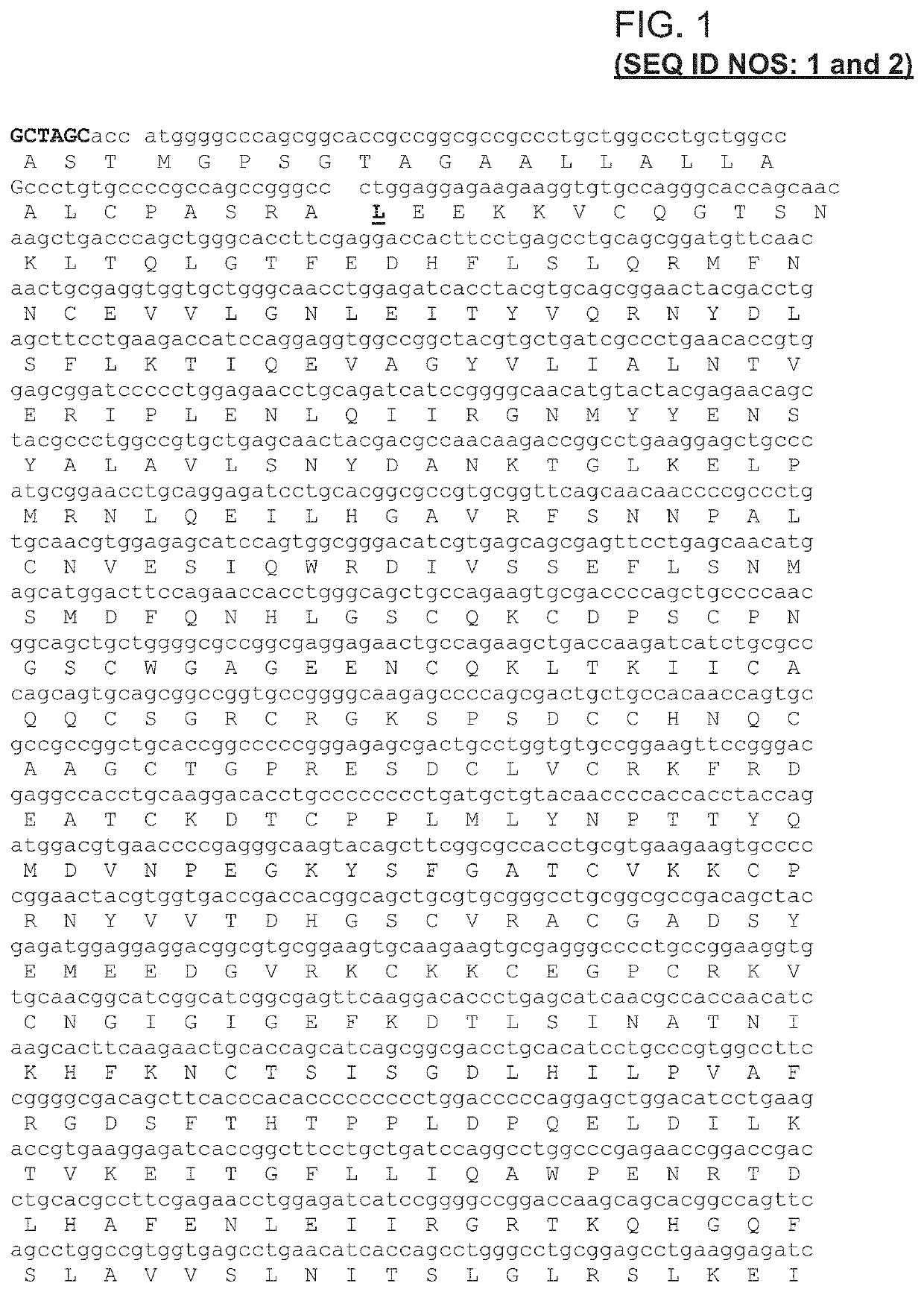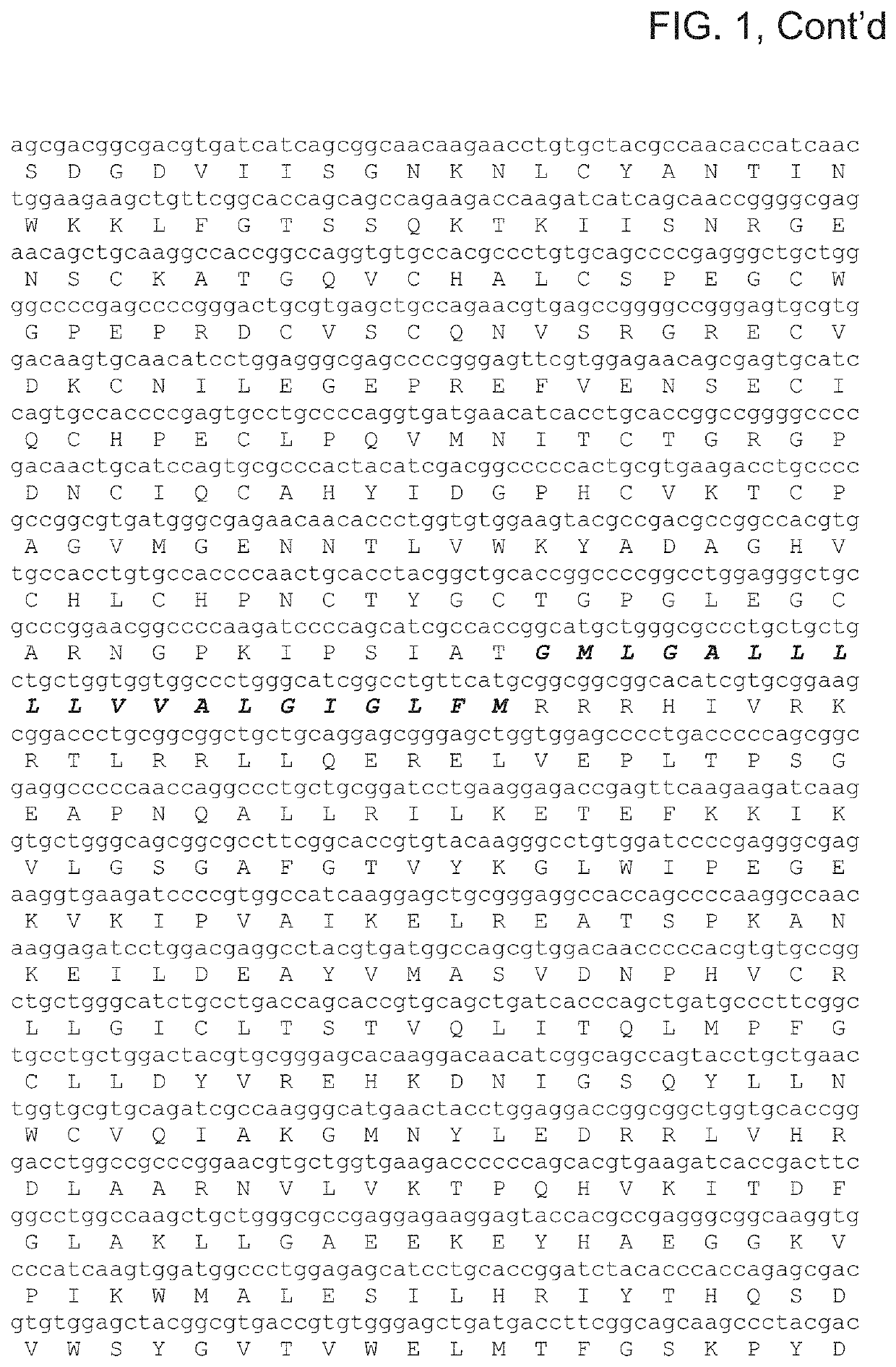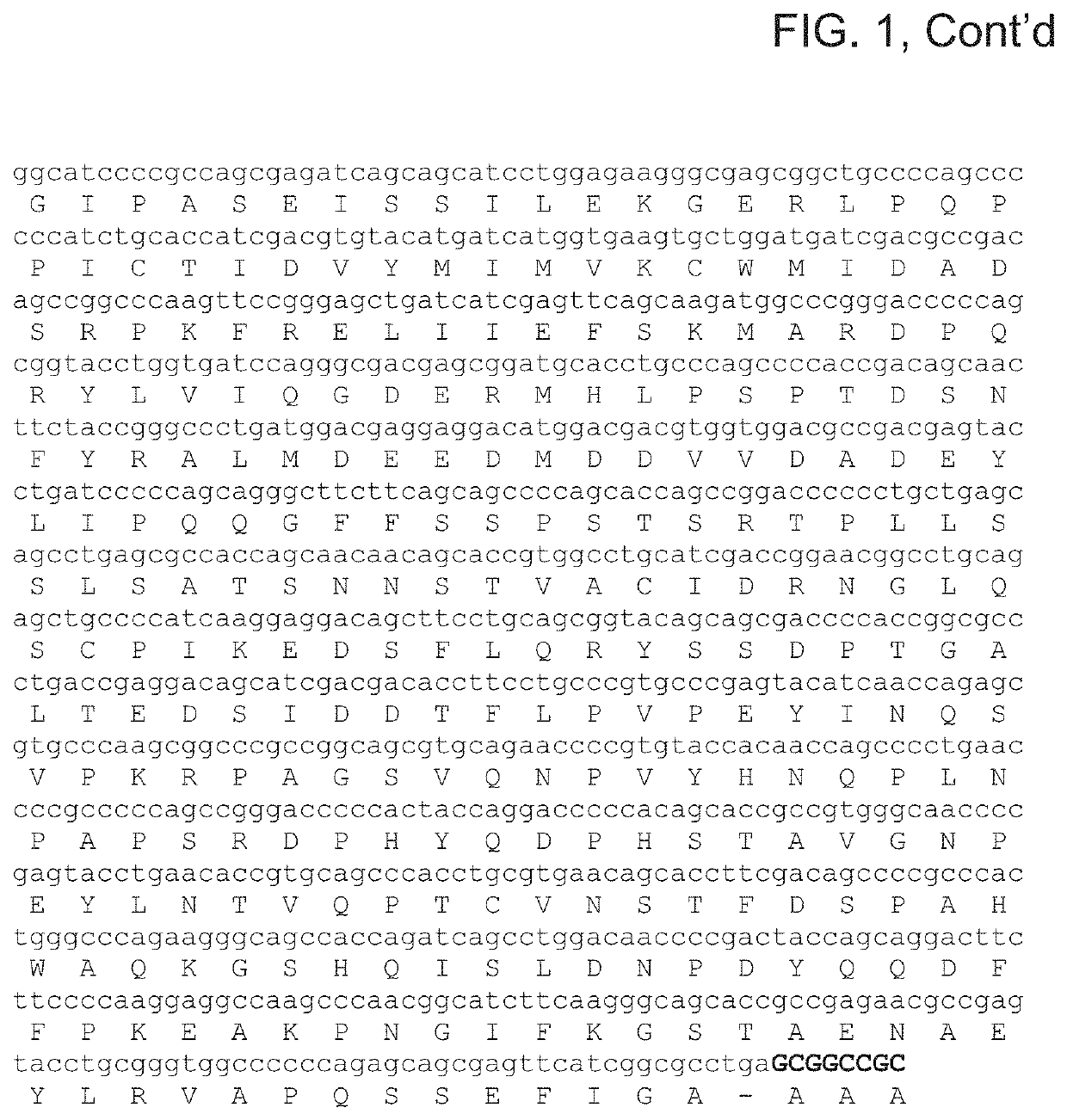Antibodies that bind EGFR and ErbB3
a technology of erbb3 and antigen, applied in the field of antigen binding sites, can solve the problems of reduced treatment cycle and/or premature termination of treatment, inability to effectively attach signal-inducing molecules, and inability to achieve effective inhibition of erbb-3 receptor signaling with small molecule tyrosine kinase inhibitors (tki's)
- Summary
- Abstract
- Description
- Claims
- Application Information
AI Technical Summary
Benefits of technology
Problems solved by technology
Method used
Image
Examples
examples
[0150]Cell Lines:
[0151]BxPC-3-luc2 (Perkin Elmer 125058), CHO-K1 (DSMZ ACC110), 293F (Invitrogen R790-07), A549 ATCC® CCL-185™Homo sapiens lung Carcinoma, BxPC-3 ATCC® CRL-1687™Homo sapiens pancreas adenocarcinoma, and A431 cells DSMZ ACC 91 were purchased and routinely maintained in growth media supplemented with 10% fetal heat inactivated bovine serum (FBS). 293F Freestyle cells were obtained from Invitrogen and routinely maintained in 293 FreeStyle medium. BxPc-3-luc2 (Bioware® Ultra Light Producing) cell line is a luciferase expressing cell line which was stably transfected with firefly luciferase gene (luc2). The cell line was established by transducing lentivirus (pGL4 luc2) containing luciferase 2 gene under the control of human ubiquitin C promoter. The cell line is commonly referred to as BxPc-3-luc2, it is a human cell pancreas adenocarcinoma cell line derived from BxPC-3 ATCC (CRL-1687™). Bioluminescence In Vitro: Approximately 370 photons / sec / cell. Exact number will vary...
PUM
| Property | Measurement | Unit |
|---|---|---|
| equilibrium dissociation constant KD | aaaaa | aaaaa |
| concentration | aaaaa | aaaaa |
| concentrations | aaaaa | aaaaa |
Abstract
Description
Claims
Application Information
 Login to View More
Login to View More - R&D
- Intellectual Property
- Life Sciences
- Materials
- Tech Scout
- Unparalleled Data Quality
- Higher Quality Content
- 60% Fewer Hallucinations
Browse by: Latest US Patents, China's latest patents, Technical Efficacy Thesaurus, Application Domain, Technology Topic, Popular Technical Reports.
© 2025 PatSnap. All rights reserved.Legal|Privacy policy|Modern Slavery Act Transparency Statement|Sitemap|About US| Contact US: help@patsnap.com



